Not just looking at cars, but looking at life.
Author: siqi
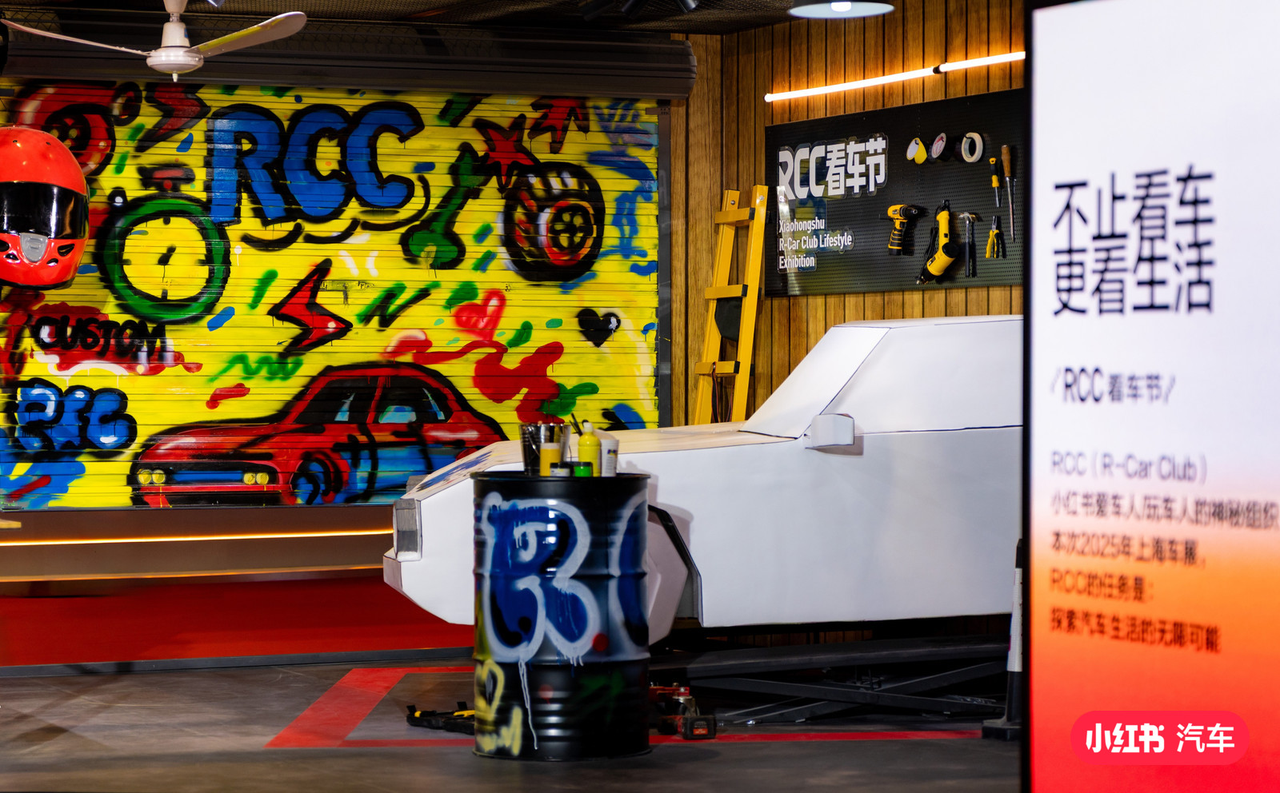
This year at the Shanghai Auto Show, the presence of Xiaohongshu was unexpectedly high.
Not only did it set up its own offline booth, but more importantly, the attendees at the exhibition—whether they were ordinary consumers, media, or professionals in the automotive industry—could often be seen frequently and skillfully searching for relevant information on Xiaohongshu. This made me realize that it has become an important platform influencing every link in the process of choosing, buying, and even selling cars.
I heard a retired lady say on-site: "Even if our wallets allow, we don't have that many Shanghai license plates, so buying a car must be carefully selected." Thus, for product questions that sales couldn't clarify, they would search for experience notes on Xiaohongshu; for calculations they couldn't figure out, they could check out others' bills in the community. The "grass planting" culture of Xiaohongshu has already permeated the automotive industry, becoming an important part of the car buying process.
In fact, more and more car companies today have realized the importance of conducting grass planting marketing on Xiaohongshu. After communicating with some marketing personnel from car companies on-site, I learned that brands like Mercedes-Benz, Zhiji, Xpeng, and Cadillac have begun to leverage the Xiaohongshu platform to try out different communication strategies than before, and have achieved some results.
For car companies, they not only value the large user base gathered on Xiaohongshu and the high dependence of this group on Xiaohongshu during consumption decisions, but they also pay attention to the community characteristics of Xiaohongshu, which hold potential for brand marketing in the new era. For example, based on lifestyle insights, Xiaohongshu categorizes car consumers into seven new groups, such as travel calculators, mechanical believers, and urban wanderers.
Compared to traditional labels like family users, middle-class users, and young users, this classification directly changes the logic of content creation: car companies need to break down more detailed marketing scenarios for different products and target users. In this era of content overload, authentic and nuanced content is the key to grass planting.
Clearly, in an increasingly competitive environment, those car companies that want to become smarter also hope to actively embrace smarter platforms to find the key to their products and reshape their relationships with users.
The screen hides an important link in the car buying decision chain
In the first three days of the Shanghai Auto Show, I could see someone opening the Xiaohongshu app at almost every booth.
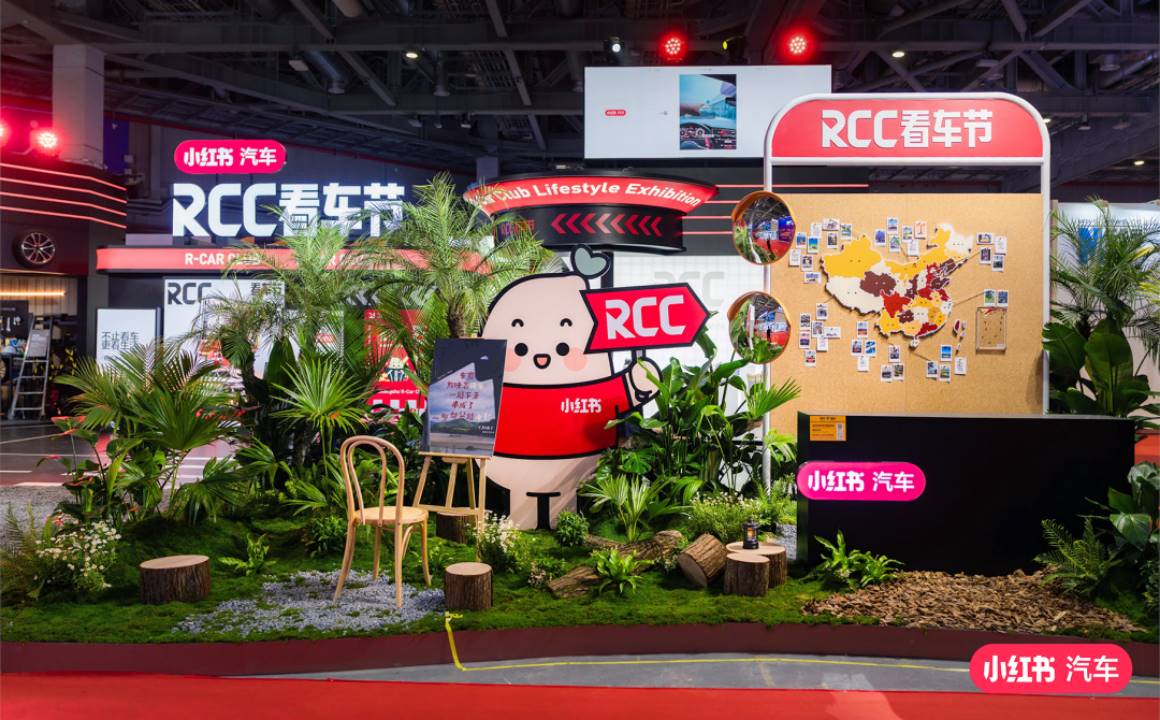
Xiaohongshu also moved its booth to the auto show site | Image source: Xiaohongshu
The first day was media day, and it was common practice to listen to press conferences while scrolling through hot topics on our phones. I saw a colleague who immediately grabbed her bag and ran to the Xpeng booth after seeing "Xpeng Robot debuts at the booth"; a more common operation was to "virtually browse the exhibition" on various social media—after all, the events were too dense and the venue too large, so it was easier to check out the shares from colleagues. Xiaohongshu is one of the productivity tools for automotive media professionals.
However, on the second and third days, I realized that for more ordinary auto show attendees and consumers, Xiaohongshu was probably not used in this way.
For them, the "breadth" of information was no longer the core demand—attendees at the auto show often had clear goals, and they cared more about the "depth" that could clearly explain a specific product. After all, buying a car is a typical non-impulsive purchase, so every product detail must be clarified.
They didn't understand or care much about the generic parameters; on Xiaohongshu, everyone wanted to see something different, real, warm, and relatable—namely: what real problems this car could solve in different specific scenarios, and what kind of functional and emotional value it could provide.
Thus, Xiaohongshu has become a "product jargon translator" in users' hands. No matter how much the sales pitch glorifies the product, these attendees with purchasing goals will search on Xiaohongshu.
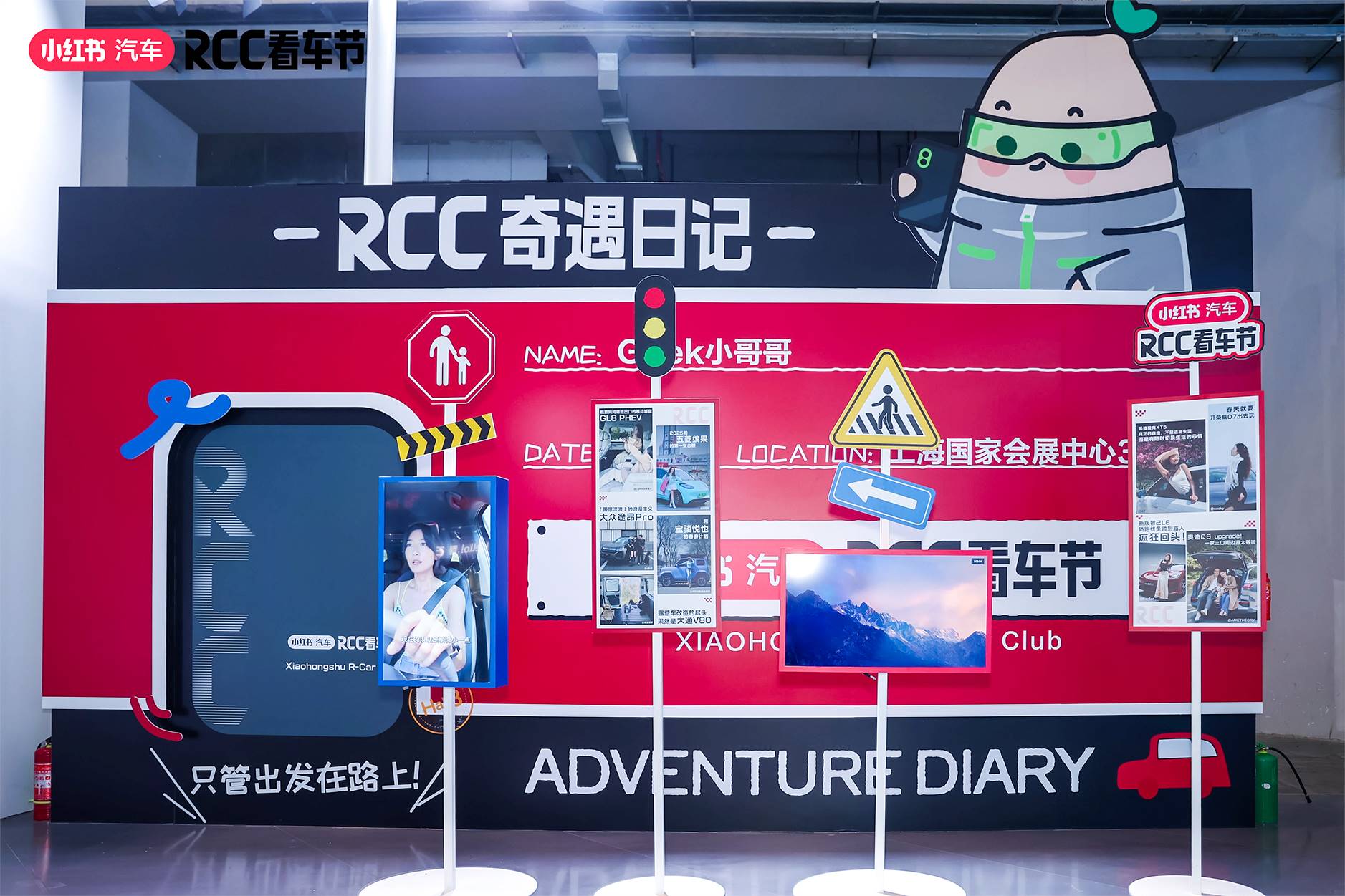
You can also "encounter" Xiaohongshu in the SAIC Group's exhibition hall | Image source: Xiaohongshu
I observed on-site that these users had two types of questions they hoped to find answers to on Xiaohongshu: one belonged to "situations that are hard to feel without practical examples"; the other was "angles that might be too niche for sales to consider."
For the former, a typical example was when a NIO salesperson explained battery swapping to customers. A few people calculated for a long time, but it was not as effective as finally seeing a NIO user post about quickly swapping batteries while others were queuing to charge during a holiday. From their expressions, I could sense that this note must have given that salesperson an unexpected boost.
For the latter, I saw a young lady who was very concerned about traveling with pets. Many brands have put effort into family marketing, but perhaps the exhaustive marketing scenarios hadn't yet addressed pet situations, and the sales staff were a bit at a loss for words.
So, I saw her searching on Xiaohongshu: "Which car is better for taking a dog out?"
I also searched to try it out, and although some pet strollers mixed into the results, many notes indeed showed pet owners explaining their experiences with various models from different angles, such as space, intelligence, ease of cleaning, and even smell. Moreover, many of these note creators were not the widely recognized "automotive bloggers," but rather consumers sharing their personal car buying experiences.
In recent years, there has been a constant complaint in the industry about not knowing how to do marketing. At that moment, I felt that if one could carefully observe what users were searching for on Xiaohongshu while sales were trying hard to promote products, it might lead to a better understanding of users' pain points and needs.
Finding new ideas for precise marketing in the book
After some research, I found that many car companies have actually keenly captured this subtle change in consumer habits and are thinking about how to achieve better marketing results through the Xiaohongshu platform.
There are several interesting cases in this regard.
Car companies have always been important clients in the advertising industry, so one can often see various automotive brand advertisements on Weibo's boot screens, airports, and other real or digital spaces. This high-profile approach has been the norm for a long time. It acts like a funnel, requiring sufficient resources to be invested first to filter out the desired core audience.
However, this approach does not apply to all brands. Particularly, many brands hope the platform can help them find target users and directly reach core circles with certain resources. For example, the MINI brand under the BMW Group.
For the MINI brand, its tone naturally aligns with Xiaohongshu, where a large number of car owners have already gathered to form a natural content ecosystem.
Taking ACEMAN's marketing on Xiaohongshu as an example, based on the goal of refined audience penetration, it helps this product formulate a reverse funnel strategy targeting three core audience groups—[Light Enjoyers], [Trendsetters], and [Relaxed Nesters]—by starting from user groups with highly similar search behaviors to car buyers, and translating the needs of opportunity groups into buying points for the target audience, finely matching "model x buying point x audience" to achieve efficient grass planting outreach. Additionally, in terms of content strategy, it combines MINI's personality tags of vitality, uniqueness, openness, and creativity to strengthen the selling points of "easy to drive, good looking, and fun" by producing differentiated scenario content.
At the same time, UGC word-of-mouth heats up user value release + KOB/S (store account KOB, sales account KOS) efficiently connects the back-end, achieving "good content + good service = good results - terminal conversion," completing the full lifecycle flow of users; in terms of business data, the cost of private messaging has significantly decreased by 39%, and the lead conversion rate has reached a high value of 5.9%, with a +12% increase in the depth of interest in grass planting for this product.
Another example comes from Xpeng Motors.
Xpeng Motors' sales have been lukewarm over the past two years, until the end of August 2024, when the MONA M03 model became a stroke of genius for Xpeng Motors. After its launch, it drove Xpeng's overall sales to continue rising, helping Xpeng Motors double its previous average monthly sales of around 8,000 units to a stable monthly sales of 30,000 units. The hot sales of MONA M03 largely relied on "breaking the circle."
Before MONA appeared, Xpeng had an awkward label: "a brand for straight men." Despite its technological leadership, it was difficult to translate into content that the general consumer could understand, so its influence was once limited to a certain circle of tech enthusiasts.
In the early stages of MONA M03's promotion, Xpeng was very clear that the product's "high aesthetic" should be the core of its publicity, aiming to break into the female market.
However, high aesthetics cannot directly equate to sales, and the female market corresponds to groups with different consumption habits. Moreover, as a product from Xpeng, it certainly couldn't abandon the advantage of intelligence. Therefore, Xpeng needed to find a way to combine aesthetics and intelligence while accurately reaching different user groups.
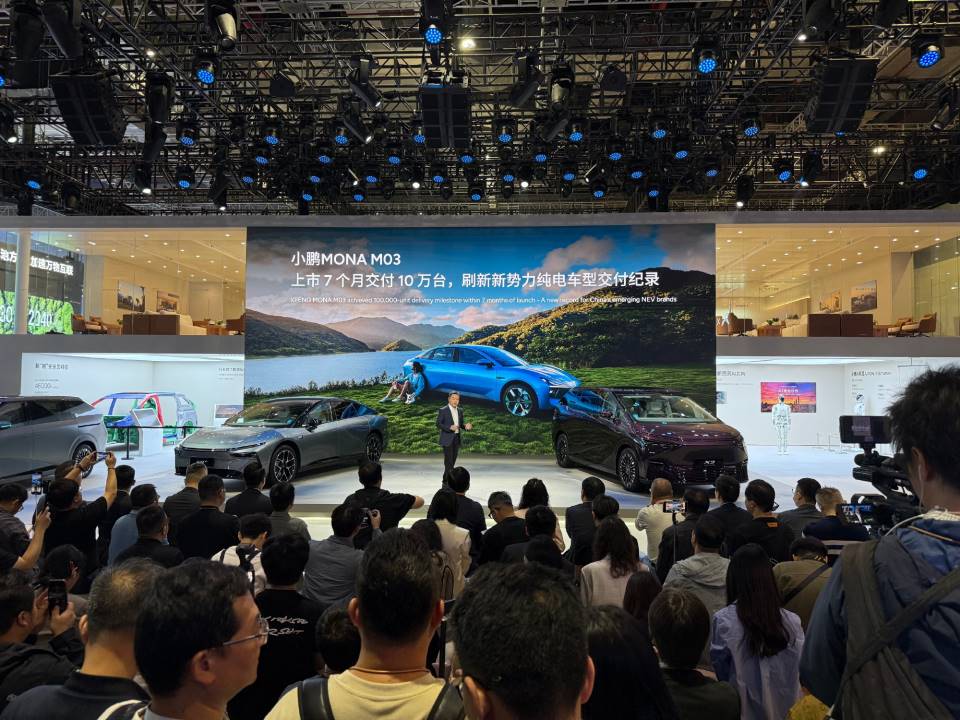
Under the breaking circle communication, MONA M03 contributed significantly to Xpeng's sales growth | Image source: Xpeng Motors
This time, Xiaohongshu provided Xpeng Motors with a "user → scenario → buying point" grass planting formula.
The core structure of this formula is: first, based on demand, find the target audience that the product needs to influence within the platform; then, based on this audience, find suitable content scenarios that combine product functions; finally, based on the scenarios, transform "functions" into "buying points," guiding content strategy creation.
Specifically, in the marketing process of MONA M03, Xpeng collaborated with Xiaohongshu to break down female users into different audience profiles, including "trendy girls" (users), and then targeted this audience with content scenarios in notes, showcasing the "intelligent parking" function to demonstrate its intelligence capabilities, completing the entire grass planting process.
At the same time, Xiaohongshu's unique dual-column card layout on the product side allows for the evaluation of advertising effectiveness through data indicators like CTR (Click-Through-Rate), enabling car companies to optimize grass planting strategies in real-time and improve marketing efficiency.
In terms of content strategy, Xpeng Motors adopted a matrix combination of founder + product manager persona accounts + corporate official accounts + KOLs for content distribution, enriching content touchpoints while conducting differentiated grass planting content dissemination; combined with new in-platform lead products like "lead cards," it efficiently acquired leads. It is reported that during the project cycle, Xpeng Motors' in-platform lead costs significantly decreased, and the reach ratio of "grass planting ads" among the in-platform lead audience also greatly increased, leading to the formation of a new marketing approach that integrates grass planting and business conversion in the automotive new force track, truly empowering business transformation through grass planting.
Xpeng Motors has always favored becoming a brand more loved by users, and this time, through its collaboration with Xiaohongshu, it has achieved a great user grass planting mindset communication and formed a multi-channel business growth.
Smarter car companies embrace smarter platforms
It is evident that whether from the experience at the auto show or the validation obtained from discussions with car companies and Xiaohongshu, an increasing number of cases indicate that Xiaohongshu has become an increasingly important and intelligent platform for the booming automotive industry today.
I believe that compared to traditional marketing channel models, Xiaohongshu can provide three differentiated values for the automotive industry today.
The first point is, of course, the community value of Xiaohongshu itself.
As a community with 300 million monthly active users, Xiaohongshu has become an indispensable electronic manual in various aspects of many people's lives.
Not only is the user base large, but the biggest feature of Xiaohongshu's community content is its emphasis on authentic, spontaneous user sharing. For example, I tried searching for the keywords "buying a car + zero interest" on Xiaohongshu, and the result was a group of budget-conscious scholars personally outlining the key points and pitfalls, advantages, and disadvantages of buying a car.
Compared to traditional automotive marketing, Xiaohongshu has three advantages. First, it has high trust; Xiaohongshu is a more decentralized content community, and compared to official "product introductions" and "4S store salespeople," shares from other consumers are more likely to gain users' trust.
The second advantage is that it better matches consumer needs. In the past, car companies provided functional information in their promotions, but the needs of car buyers vary widely, and many people are even unclear about what functions match their needs. Xiaohongshu's sharing, based on life scenarios, allows potential consumers to find sharers with similar situations, thus effectively obtaining information.
On Xiaohongshu, UGC (User Generated Content) accounts for 90%. Compared to broad official promotions, UGC shares are characterized by being small and detailed, down to the comfort of a seat or how many Sam's shopping bags can fit in the trunk—these details are key to impressing segmented users.
In fact, the accurate grasp of authenticity, details, and needs is the key to the rise of Xiaomi Motors in marketing under Lei Jun's leadership. Many car companies hope to have their own "Lei Jun," who can break down a 2-hour new product launch into countless details that users care about and can understand—after all, a sports-oriented car can attract nearly 40% female users because of its "sun protection" feature.
Although there is only one "Lei Jun," in the UGC community, your users will help you break down the highlights of your product into countless notes and recommend them to those they want to recommend to.
The second point is that Xiaohongshu's strategy of segmenting users based on lifestyle can achieve more precise user reach.
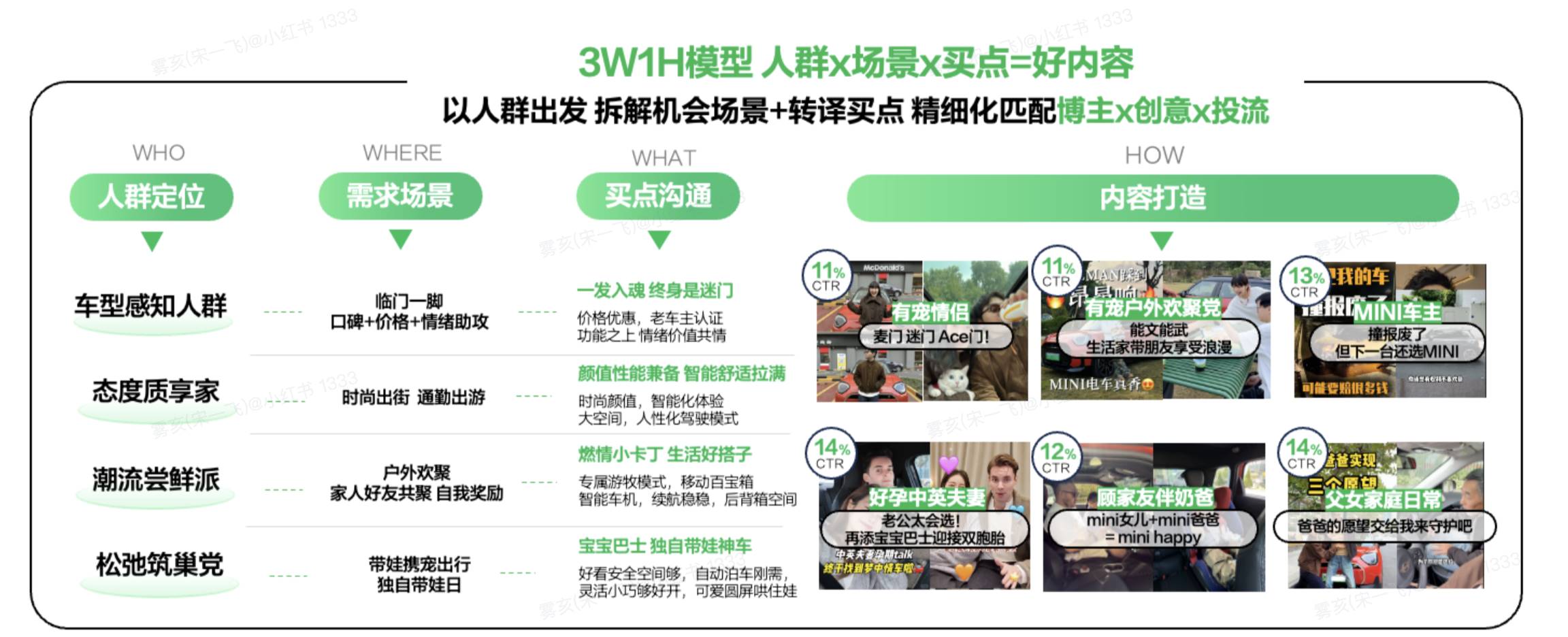
Xiaohongshu has accurately matched corresponding scenarios and buying points for different groups | Image source: Xiaohongshu
In the past, traditional car companies had a coarse granularity in targeting consumer groups, still dividing them based on gender, age, family members, wealth status, etc., and designing and marketing products based on some insights into different groups' needs. In fact, today, cars have become an extension of people's lifestyles, and compared to traditional demographic segmentation, lifestyle is more aligned with people's car usage needs.
Based on insights into modern young people, Xiaohongshu has identified 20 major lifestyle groups, and for automotive consumption needs, Xiaohongshu further divides car consumers into seven new groups: travel calculators, mechanical believers, mobile nesters, urban wanderers, luxury new aristocrats, heavily modified enthusiasts, and intelligent driving pioneers.
The new group segmentation breaks the past age and gender labels but more accurately captures the demand characteristics of similar car-buying consumers. In fact, not only in the automotive industry, but Xiaohongshu's user insights based on lifestyle have applications across different industries, aiming to more accurately grasp the needs of target customer groups and to more precisely plant grass and disseminate information based on their needs.
Finally, realizing the value of Xiaohongshu, beyond conventional grass planting and marketing, some car companies have begun to think about how to use the community to reconstruct their relationship with users.
Zhiji Motors is the latest example. Although backed by SAIC Group, as a new brand, building the brand image to help consumers quickly understand its "personality" and establish goodwill has become particularly important.
It is understood that in mid-2024, the Zhiji team broke the traditional marketing structure of OEMs and established a dedicated "Xiaohongshu team," independently responsible for communication, strategy, and customer acquisition planning on the Xiaohongshu platform.
Notably, during the collaboration between Zhiji and Xiaohongshu, the car company gradually realized the value of this group marketing through grass planting, not only starting from the "spu x group x buying point" marketing solution but also integrating grass planting thinking and group insights deeply into product development while conducting refined grass planting through a reverse funnel model, resulting in an "upgrade": the newly released "Zhiji L6 Xiaohongshu Co-branded Edition" is the first deep co-creation of a new product with the platform based on inspiration gained from Xiaohongshu.
At the Shanghai Auto Show, we also saw this new product co-created by the car company, platform, and users.

Zhiji L6 Xiaohongshu Co-branded Edition | Image source: Xiaohongshu
In this online community for everyone, there are many clues worth exploring for car companies. The famous phrase "internet car manufacturing" from ten years ago has now been given a new meaning by the Xiaohongshu community platform: listening to valuable user voices, finding the right needs and clues, is exceptionally important as competition in the automotive industry reaches a fever pitch.
免责声明:本文章仅代表作者个人观点,不代表本平台的立场和观点。本文章仅供信息分享,不构成对任何人的任何投资建议。用户与作者之间的任何争议,与本平台无关。如网页中刊载的文章或图片涉及侵权,请提供相关的权利证明和身份证明发送邮件到support@aicoin.com,本平台相关工作人员将会进行核查。




